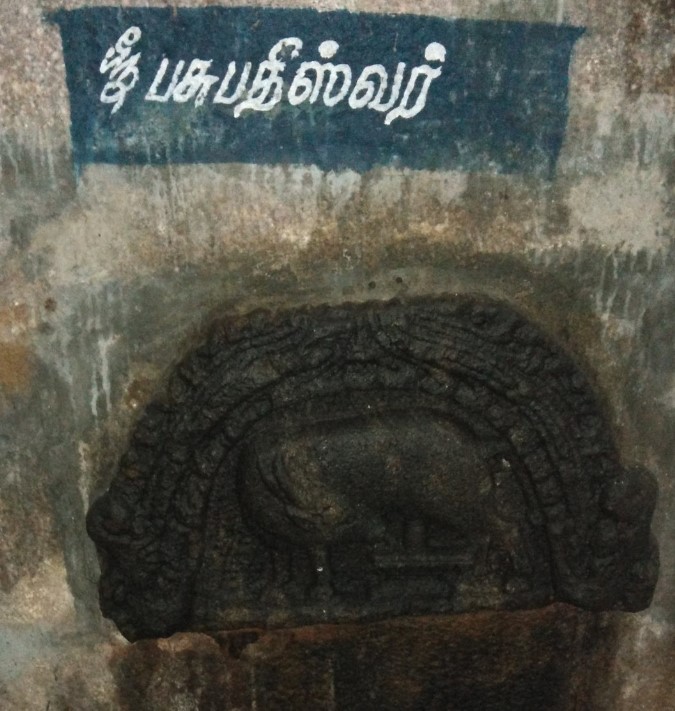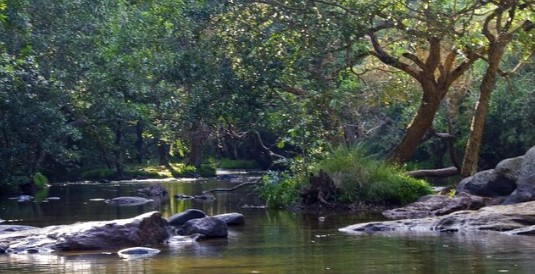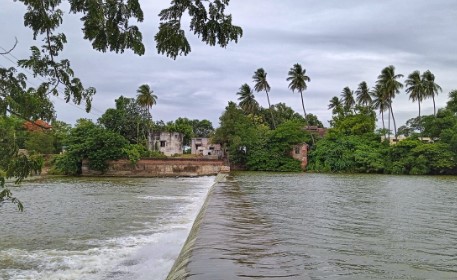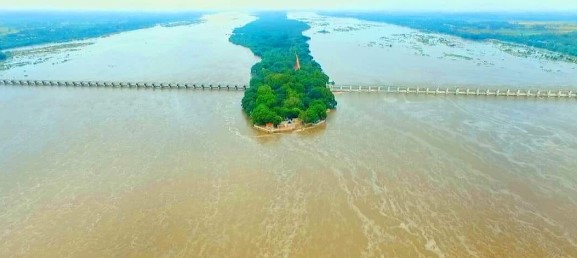- Thillaisthanam or Tiruneithanam is a Hindu temple dedicated to Lord Shiva located in the village of Thillaisthanam, Tamil Nadu, India.
- The temple is incarnated by the hymns of Thirugnana Sambandar and is classified as Paadal Petra Sthalam.
- This Shivasthalam is the 7th of the Thiruvaiyaru Saptastana Temples, just a kilometre west of Thiruvaiyaru. Pugazhenthippulavar and Ottakkoothar have sung praises of this shrine.
- The Saptastana temples of Thiruvaiyaru are Tirupazhanam, Tiruchotruthurai, Thiruvedikudi, Tirukkandiyur, Tiruppanturai, Thillaisthanam and Tiruvaiyaru.
- Tiruneithanam is considered to be the 52nd in the series of Tavera Stalams in the Chola kingdom located north of the river Kaveri.
Saptha Stanam
- The sapthasthanam festival is conducted at Thiruvaiyaru during April every year.
- Hundreds of people witness the convergence of seven glass palanquins carrying principal deities of respective temples from seven places at Thiruvaiyaru.
- The palanquins are paraded near the car stand.
- The crowd witnessed the Poochoridhal (flower festival) in which a doll offers flowers to the principal deities in the palanquins. After the Poochoridhal, the palanquins left for their respective places.
- The seven temples are
| Temple | Place | District |
| Aiyarappar temple | Thiruvaiyaru | Thanjavur |
| Apathsahayar Temple | Thirupazhanam | Thanjavur |
| Odhanavaneswarar Temple | Thiruchotruthurai | Thanjavur |
| Vedapureeswarar Temple | Thiruvedhikudi | Thanjavur |
| Kandeeswarar Temple | Thirukkandiyur | Thanjavur |
| Puvananathar Temple | Thirupanturuthi | Thanjavur |
| Neyyadiappar Temple | Tiruneithaanam | Thanjavur |
PURANIC SIGNIFICANCE 1:

- It is believed that the divine cow, Kamadhenu, was habitually pouring her milk in a particular place in this region.
- The milk turned into ghee under the influence of natural forces like Sun and rain. Once a shepherd noticed Kamadhenu and tried to catch her but she disappeared. Finding the actions of the cow to be very odd, he informed the locals about this incident.
- They then dug up the place and found a Shivalingam there.
- When the king was informed about this, he arranged for a temple to be built there.
- He further made arrangements for abhishekam to be performed there using ghee every day.
- There is a beautiful relief depicting Kamadhenu worshipping Lord Shiva in the hall. The lord of this temple is praised as “Sri Neyyadi Appar” and this place is known as “Nei Thanam”.
- This is because Ghee in Tamil is called “Nei”.
PURANIC SIGNIFICANCE 2:
- An old lady used to take the spinach (keerai in Tamil) from the temple and sell it, to earn a living.
- After many years, she prayed to Shiva for a better level of income, but was admonished, saying that her wages were paid in keerai.
- There is another variant of this legend, reminding devotees not to take things away from the temple.
- A devotee was in the habit of worshipping the Lord by lighting lamps at the temple, and then plucking some spinach from the temple grounds on his way home.
- As he aged, he prayed to Shiva for better health, for which the reply was that he had got his returns / remuneration in the form of the spinach he had taken, and so he could not be given mukti / salvation.
- It is possibly this puranam that has given rise to the general saying “Sivan soththu, sarva naasam” (meaning taking away Siva’s property will result in downfall), and the practice of showing one’s empty palms to Chandikeswarar, the protector of Shiva's temples.
PEOPLE WHO WORSHIPPED HERE:
- It is believed that a Sri Lankan King by the name of Kayavahu worshipped the lord of this temple as his family deity. He arranged for many festivals to be celebrated here.
- It is believed that Goddess Saraswathi, Kamadhenu, Sage Gauthama, Saint Thirugnanasambandar and Saint Thirunavukkarasar (Appar) have worshipped the lord here.
.jpg)


